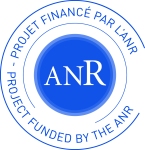NEW ! EU Project ENHANCE will start soon !
“ENHANCE”- Piezoelectric Energy Harvesters for Self-Powered Automotive Sensors: from Advanced Lead-Free Materials to Smart Systems (EU Project 722496)
Université de Franche– Comté UFC , France / FEMTO-ST (Franche-Comté Electronique Mécanique Thermique et Optique – Sciences et Technologies)
Imperial College London, United Kingdom / Faculty of Engineering/Department of Electrical and Electronic Engineering
Ecole Polytechnique Fédérale de Lausanne EPFL, Switzerland / Engineering School/Materials Science Institute/Ceramics Laboratory
INSA-Lyon, France / INSA Lyon/LGEF
National Interuniversit y Consortium of Materials Science and Technology INSTM, Italy / INSTM UdRCT
Institut Polytechnique de Grenoble Grenoble INP, France / IMEP-Lahc
University of Cologne UCO, Germany / Institute of Inorganic and Materials Chemistry
Cedrat Technologies CTEC, France
Partner Organisations
PSA Peugeot Citröen, France
AIXTRON, Germany
frecInIsys, France
Georgia Institute of GTech, USA
INTENSE – Integration of complex ferroelectric epitaxial oxides on planar and nanowire semiconducting platforms: engineering of nanoscale ferroelectric domains
 ANR (Frenh National Researh Agency)
ANR (Frenh National Researh Agency)
Period: 2014 – 1016
Partners:
– CEMES Centre d’Elaboration de Matériaux et d’Etudes Structurales
– IMeP-LAHC Institut de Microélectronique Electromagnétisme et Photonique
– INL Institut des Nanotechnologies de Lyon
ANR grant: 456 976 euros
Ferroelectrics are a fascinating class of materials both from a fundamental standpoint and for their potential applications such as a gate oxide in field-effect transistors for low power logic. The key functionality of ferroelectrics arises because their polarization can be switched between two-stable orientations by application and reversal of an electrical field. However, in epitaxial ultrathin films on a semiconductor, a perpendicular polar state may not be switchable due to incomplete screening and depolarization field issues.
The project INTENSE is devoted to the study of ferroelectric nanodomains in the complex oxide BaTiO3 epitaxially grown on semiconductor planar- or nanowire-platform. The overarching objective is to understand and control, in ultrathin films (< 50 unit cells), the conditions favoring a bi-stable perpendicular polar state and engineer the nanodomain pattern for their future integration. The challenges to be solved are diverse: i) there are materials issues related to thermal strain, lattice mismatch and depolarization field effects – ii) there are nanocharacterization challenges as both the crystalline and ferroelectric domains on semiconductors appear to be non-periodic and display nanometer size. In addition, phenomena at interfaces such as surface rumpling and ionic contributions to screening are of paramount importance.
To address these different challenges, the consortium gathers three academic laboratories (INL, CEMES, IMEP-LaHC) to leverage their unique and complementary expertises in i) epitaxy by both MBE and CVD/ALD for monolithic integration of oxides on semiconductors, ii) structural nanocharacterization using advanced TEM techniques such as HRTEM, dark holography or High Angle Annular Dark Field imaging and iii) advanced electrical and electro-mechanical nanocharacterization based on atomic force microscopy.
Within INTENSE, we address for the first time the ferroelectricity of BaTiO3 on various semiconductor substrates: planar SiGe.The ultrathin BaTiO3 films will be grown by CVD on MBE-grown templates. CVD is highly flexible to provide adequate oxygenation, to explore various systems and to achieve conformal coverage. MBE is so far the unique technique for the passivation of the semiconductor surface by 1/2 monolayer of Sr or Ba and for the epitaxy of SrTiO3 template. The in-line coupling of the MBE, CVD/ALD and XPS will offer a unique ensemble for the search of new growth strategies. Eventually, our ultimate goal is to achieve the epitaxy of a perovskite directly on Si by ALD/CVD for a fully industry-compatible integration scheme.
Detailed structural studies will be done, ex-situ, with advanced TEM methods. Lattice parameter profiles at the nanoscale will be determined by geometrical phase analysis from HRTEM and holodark. Moreover, atomically resolved measurements of the local atomic displacements giving rise to electric polarization will be performed; this advanced and powerful method will allow local mapping of the polarization direction and amplitude. Such mapping will shed light on the screening and interface mechanisms involved in the polar distortion and ferroelectric nanodomain pattern. The static and dynamic study of domains will be performed by piezoresponse force microscopy and in situ TEM under applied electric field. Finally, nanocharacterization using various electrical modes of atomic force microscopy will be performed to give insight into the local dielectric behavior of the films.
Breakthrough discoveries in the nanophysics of ferroelectric/semiconductor interfaces and in the technology of monolithic integration are expected.

